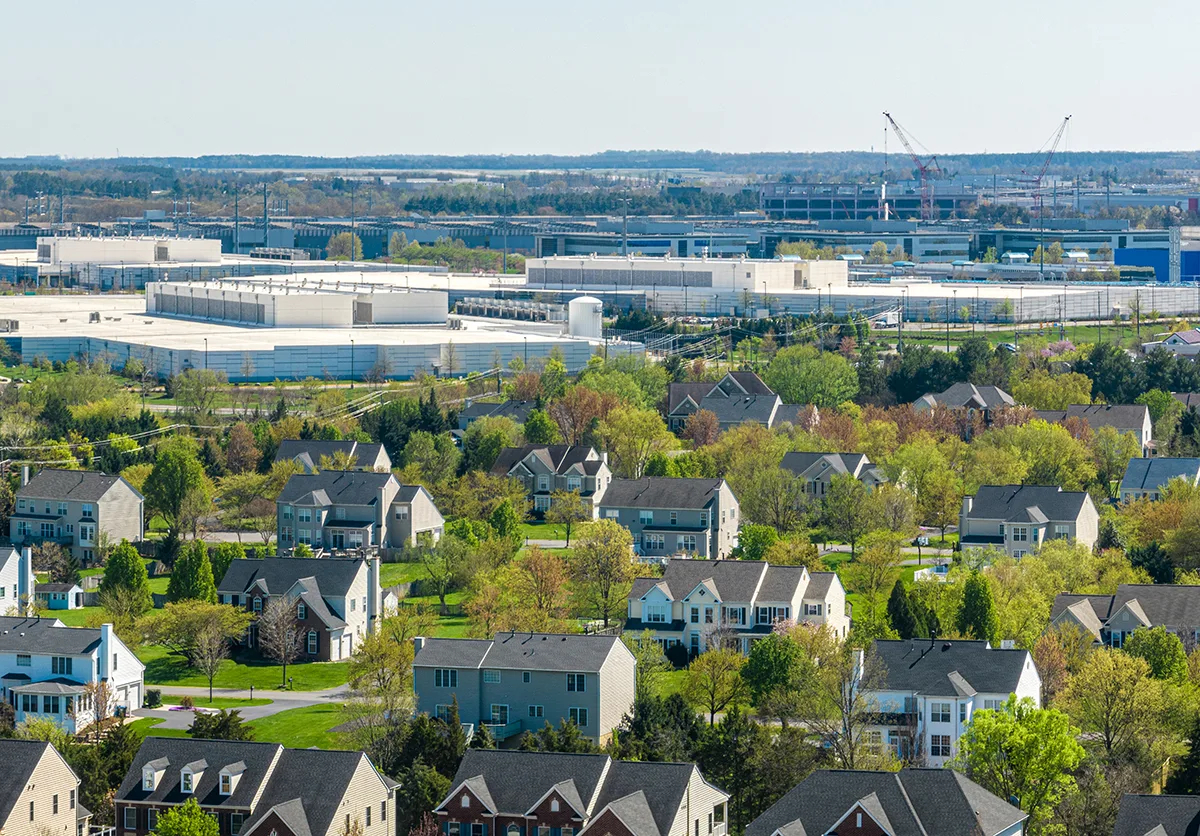Data Center Gold Rush: Inside the Multi-Billion Dollar Land Grab

The most valuable resource of the 21st century isn’t buried in the ground; it’s generated in the cloud. And the race to control it is sparking a modern-day gold rush.
But instead of picks and shovels, this rush is fought with capital, concrete, and fiber optic cables. Welcome to the multi-trillion-dollar global land grab for data centers, the physical backbone of the digital world.
For the boardroom, this is not a niche real estate story; it’s a strategic imperative. The location, security, and power consumption of these digital fortresses will define competitive advantage, geopolitical power, and corporate resilience for the next decade.
Understanding the dynamics of this race is critical to making winning decisions.
The New Gold: What’s Fueling the Frenzy?
Three powerful currents have converged to create this perfect storm of demand:
- The AI Tsunami: The explosion of generative AI has created a voracious, unprecedented demand for computing power. Training large language models (LLMs) requires staggering amounts of energy and processing, forcing companies like Microsoft, Google, and Amazon to dramatically accelerate their infrastructure build-out.
AI is no longer a software play alone; it’s a hardware and infrastructure war.
- The Cloud’s Center of Gravity: The migration of enterprise operations to the cloud continues unabated. As companies shed physical servers, they are consolidating their digital footprint into massive, centralized hubs.
This creates immense economies of scale but also concentrates risk and demand in specific geographic locations.
- The Rise of Digital Nationalism: Governments worldwide are waking up to the strategic importance of data. Citing security and privacy, nations are increasingly mandating that their citizens’ and companies’ data reside within their physical borders.
This trend of “data sovereignty” is splintering the global internet into national and regional fiefdoms, forcing a duplication of infrastructure across the globe.
The Battlefield: Where the Land Grab is Happening
This isn’t a random sprawl; it’s a targeted campaign for locations with a holy trinity of resources: available land, robust fiber connectivity, and, most importantly, massive amounts of power.
The undisputed global capital is Loudoun County, Virginia, often called “Data Center Alley,” which by itself handles a vast portion of the world’s internet traffic through the largest concentration of data centers on Earth.

But the rush is expanding to new fronts:
- Primary Hubs: Silicon Valley, Phoenix, Atlanta, Dublin, and Singapore remain critical battlegrounds where land is scarce and power grids are strained.
- Emerging Territories: Secondary markets in places like Madrid, Warsaw, and even more remote locations with cheap, abundant energy (like Iceland with its geothermal power) are becoming the new frontier.
The challenge is that building these digital fortresses is a slow, capital-intensive process fraught with obstacles, from local zoning disputes to securing power grid connections that can take years to obtain approval.
The War Room Memo: Strategic Questions for the Board
This global land grab has direct, tangible consequences for every organization. The leadership team must be asking the following critical questions:
- Is Our Digital Supply Chain Secure?
As a company, are we reliant on a single cloud provider or a single geographic region?
A power outage, regulatory change, or geopolitical event in a place like Virginia could have catastrophic consequences for our operations. Diversifying our digital footprint is now as critical as diversifying a physical supply chain.
- Where Does Our Data Physically Live?
Do we know the precise location of our most critical data assets? Are we in compliance with the growing patchwork of data sovereignty laws like GDPR in Europe?
Ignorance is no longer a defense, and the penalties for non-compliance are severe.
- What is Our Exposure to the Energy Crisis?
Data centers are on track to consume nearly 10% of the world’s electricity within the decade. This voracious appetite for power makes any company using cloud services highly exposed to energy price volatility and grid instability.
What is our provider’s energy strategy? Are our data assets housed in sustainably powered facilities to meet our own ESG commitments?
The End Game
The data center gold rush is more than a boom in industrial real estate; it’s the physical manifestation of the race for digital supremacy.
The winners will not be those who simply build the most data centers, but those who can secure the most strategic locations, the most resilient power sources, and the most favorable political environments.
For leaders in the business war room, the message is clear: the ground beneath the cloud is shifting. The time to map your digital territory and secure your strategic position is now.